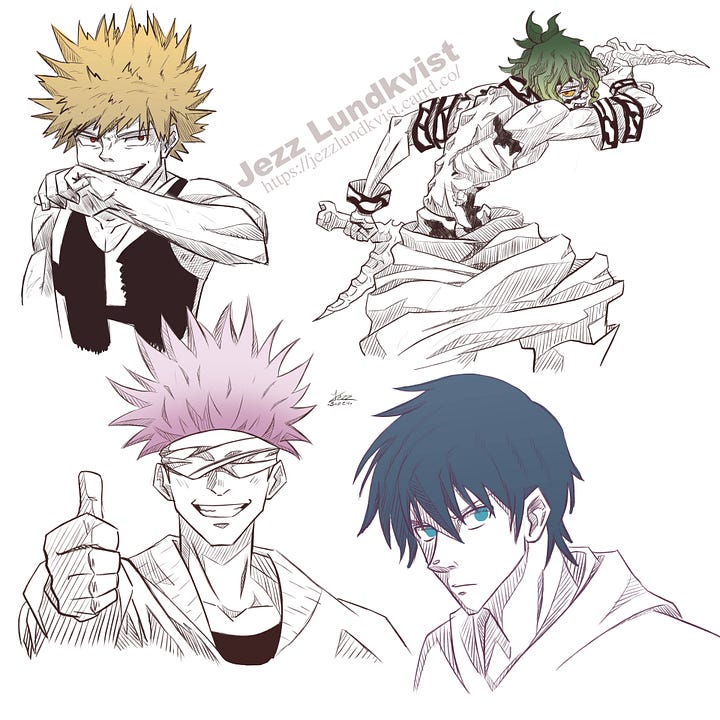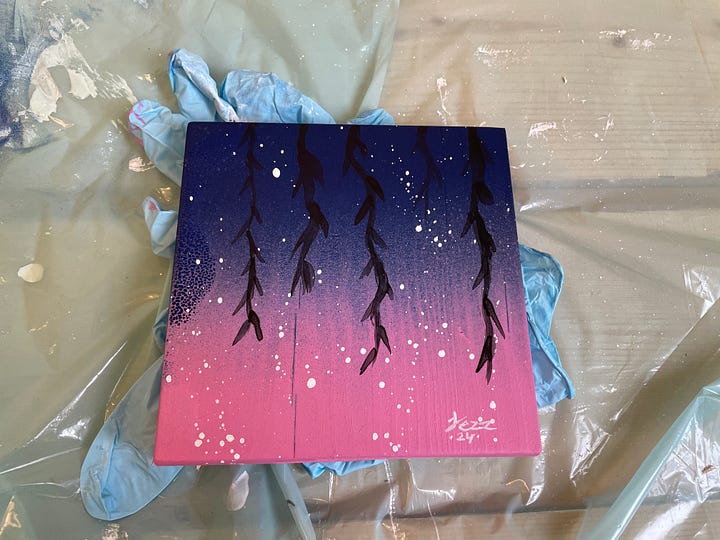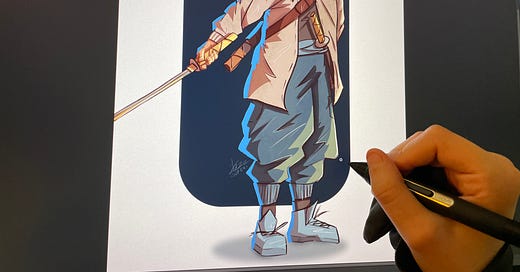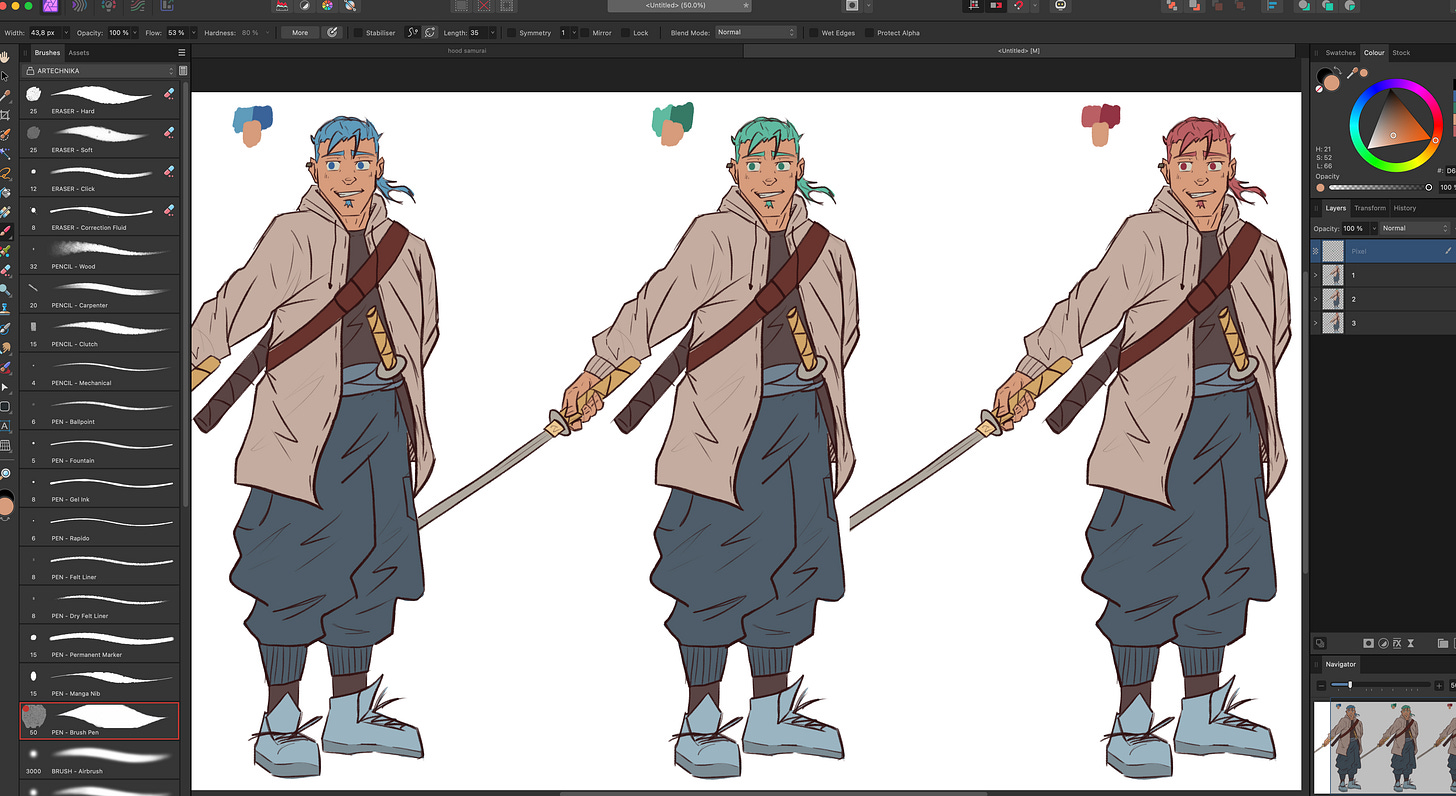Hello everyone! Halloween Month is here. 🎃
Did You Hear About Art Schools Closing Down in the U.S.?
It’s true, several prominent art schools in the U.S. are closing their doors, with three major institutions set to shut down as soon as the current batch of students graduates. The official reason? A decline in student applications.
But is that the whole story? Not quite. There are two major issues these schools aren’t really addressing: cost and relevance.
The Price Tag is Astronomical
Tuition at these art schools is sky-high. Students are paying enormous amounts, often leading to lifelong debt. In today's world, many wonder, what are they really paying for? Are they investing in a curriculum that prepares them for the future of art, or are they stuck paying for outdated, traditional methods?
Outdated Curriculums
Many of these institutions haven't kept up with the times. While foundational skills like anatomy and figure drawing are essential, they aren't enough on their own. The art world has changed drastically. Today, a significant portion of creative work happens digitally. Studios are more interested in world-building, unique styles, and innovative design than in perfecting traditional figure drawing.
Some students have even reported restrictions on what they’re allowed to create, stifling creativity rather than encouraging it. These schools often stick to old-school rules that don't fully align with the needs of modern industries.
The Industry Wants More Than Just Traditional Skills
The art world today values versatility. Whether it's designing characters for video games or building entire digital worlds for movies, the demand is for creativity that blends traditional and digital techniques. Unfortunately, many of these schools are still rooted in the past, failing to equip students with the modern tools they need.
Now, don’t get me wrong, understanding anatomy, perspective, and other classical skills is still important. But schools need to adapt to remain relevant.
The Burden of Student Debt
On top of this, U.S. students are left with crippling debt. In contrast, countries like Sweden have more accessible education systems, offering students nearly "free" education. However, it’s worth noting that Sweden doesn’t have a wide range of specialized art schools like those in the U.S.
Alternatives: Online Learning is Booming
These days, many of the skills taught in art schools are available online for a fraction of the cost or even for free. Platforms like YouTube or specific art-focused websites offer high-quality tutorials that cover everything from the basics to advanced techniques.
Here are some affordable and valuable alternatives to traditional art schools:
💛 21 Draws: One of the most affordable subscription-based art learning platforms. It frequently has sales, offering a great value for money.
💛 Creature Art Teacher: Founded by Aaron Blaise, this platform offers a variety of courses on animals, animation, and more, with a one-time payment or subscription option.
💛 ArtWod: A fun, subscription-based art learning site that includes weekly "workouts" alongside structured courses. It’s known for its engaging approach.
💛 Schoolism: The priciest option, but they bring in big-name artists for their courses. Recently, they’ve begun offering one-time payment options for select courses.
💛 Digital Painting Studio: Focused on concept art, this platform offers a monthly subscription at a lower price point. The courses, while fewer, are still top-notch. Offers a Mentorship, but expensive.
💛 Proko: Proko provides a wide range of courses, though it leans more towards traditional methods. Don’t let that fool you, it’s still a fantastic resource, though more expensive.
Is Competition Necessary for Growth?
One thing that traditional art schools offer is competition, working alongside other students can push you to improve. However, the question is, do you really need it? Many artists thrive in online communities and collaborative spaces without the pressure of traditional classroom settings.
🍂 Art Journey
It all started with a YouTube video. I was watching an artist bring Zenitsu from Demon Slayer to life, dressed in some cool streetwear. It sparked something in me, that urge to pick up my own pencil and create. But instead of going for the typical anime style, I reached for a familiar reference from my collection, a samurai.
I wasn’t planning anything too elaborate at first. I just wanted to capture the essence of the figure in the reference. Simple, right? But as I began sketching, my imagination took over. The samurai on the page began to shift, morphing into something more personal, an original character I’d had bouncing around in my head for a while now. This wasn’t just any character either. He was based on an idea I’d been playing with for some time, a samurai inspired by Tsukuyomi, the Japanese moon god. I’d always wanted to explore this concept, but I’d never quite gotten around to it. Until now.
The more I worked, the more Tsuki (as I decided to call him) came to life. He wasn’t just a samurai; he had an ethereal, otherworldly energy about him, lunar energy. It was as though he wielded the very power of the moon in his hands. But I wasn’t done yet. The next step was choosing colors, and I had a clear vision in my mind: a soft, mysterious palette that reflected the moon’s cool, silver light.
However, creativity has a way of taking unexpected turns. Instead of sticking to my original plan, I started experimenting with different color combinations. Should his hair & eyes be dark, like a night sky, or luminous, like the full moon? Should I play with contrasting shades? I wasn’t sure anymore. The more I toyed with these options, the more uncertain I became. So, I did what many artists do when they hit that wall, I reached out for feedback.
I shared my ideas with others, hoping for some insight or guidance. But, to my disappointment, not many responded. I was left standing at the crossroads of indecision.
In the end, I returned to the color scheme I had envisioned from the beginning. It felt right, as if I had always known where this character was headed. This was my first time really exploring color combinations like this, and honestly, I’m not sure if I’ll do it again. The process was more challenging than I expected.
As for Tsuki himself, he’s still a work in progress. His powers are tied to lunar energy manipulation, but there’s more to his story that I haven’t quite developed yet.
It feels good to finally bring him to life, even if his journey is only just beginning.


Did the manga sketches to try not to color everything. To break free from my own need to make fully colored illustrations.
The spray painting is done on wood. 😁
🍂 What to read next
Thank you so much for your generosity and support!









